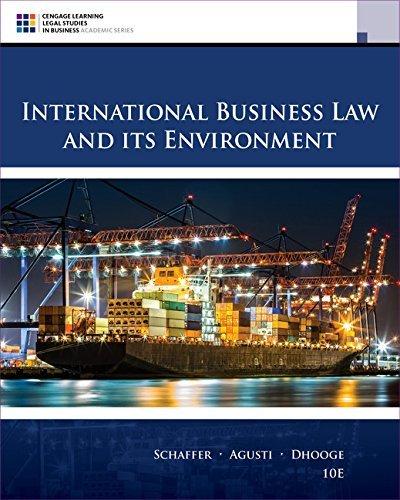During the 1960s and 1970s, the European steel industry was near financial collapse. With the support of
Question:
1. What is "privatization" and how might it affect a subsidies case?
2. Why did the ITA conclude that the EC steel mills were the "same legal person"?
3. What factors should be considered in determining whether the European mills were still benefitting from earlier subsidies?
Fantastic news! We've Found the answer you've been seeking!
Step by Step Answer:
Related Book For 

International Business Law And Its Environment
ISBN: 9781305972599
10th Edition
Authors: Richard Schaffer, Filiberto Agusti, Lucien J. Dhooge
Question Posted:





